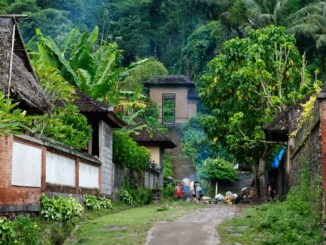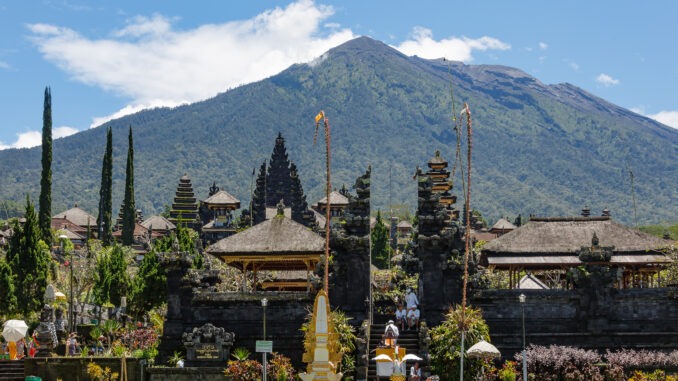
Table of Content:
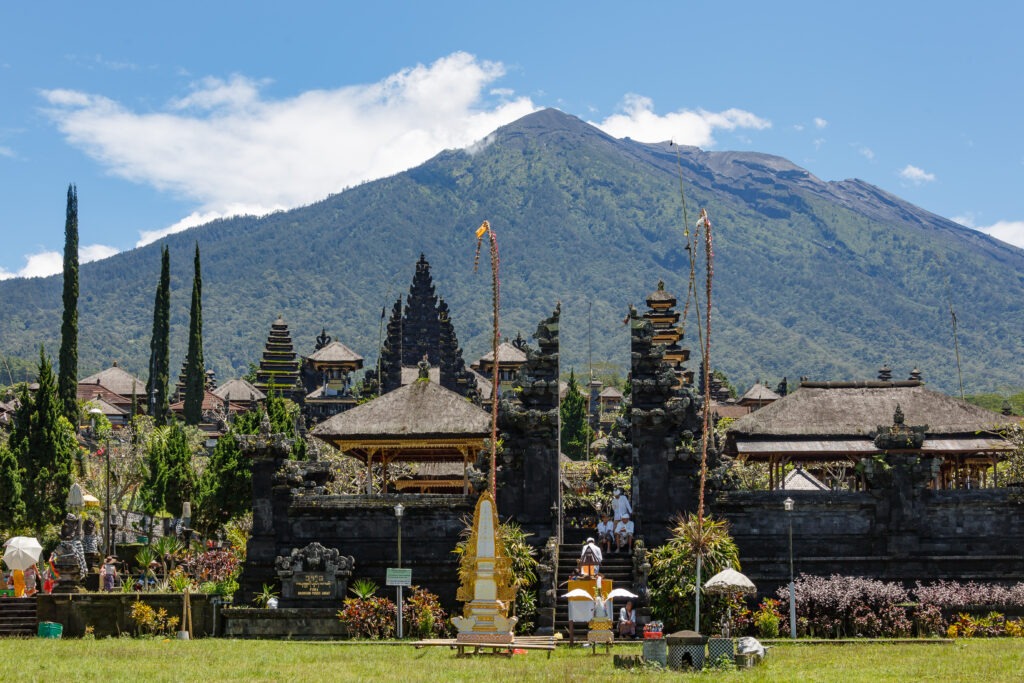
In the past, the Indonesian island of Bali has become more and more attractive as a vacation destination for many people in the world. The pleasant temperatures, as well as the (for us Central Europeans) exceptional nature are among the main reasons why the island has become extremely popular for any number of tourists.
Besides special animals and plants, the island visitors are offered other natural attractions, such as the impressive volcano called“Gunung Agung“. More interesting information about this natural attraction can be found in this article.
General info & history of “Gunung Agung
Indonesia generally has several quite high volcanoes. However, Gunung Agung is one of the five highest volcanoes in the entire country, and with a total height of 3,142 meters, represents the highest mountain in Bali. The locals say that Gunung Agung is for them the holiest of all mountains, and also the center of the world. The majority of all religious Balinese align their lives with the volcano. In addition, the mountain is said to be the home of their gods, on the one hand, and the home of the spirits of their ancestors, on the other.
According to a legend, the volcano was created by the hand of the Hindu god“Pasupati“, in which the god split the mountain called“Meru” (in their eyes the spiritual center of the universe), and then created the volcano Gunung Agung from a mere splinter. This is also the reason why the mountain is considered the center of the world for many religious Balinese.
On the southwestern slope at an altitude of 900 meters there is also a Hindu temple called“Pura Besakih“. It is said of this temple that the ancestors of the locals are worshipped there just like the gods. In addition, the mountain has several shrines and altars, which may not be entered by strangers.
Within religious ceremonies, the volcano is regularly climbed by many believers. Meanwhile, palm leaves carried along ensure that holy water is collected. Towards the end of such ceremonies, pilgrims are then sprinkled with this holy water.
Recent volcanic eruptions
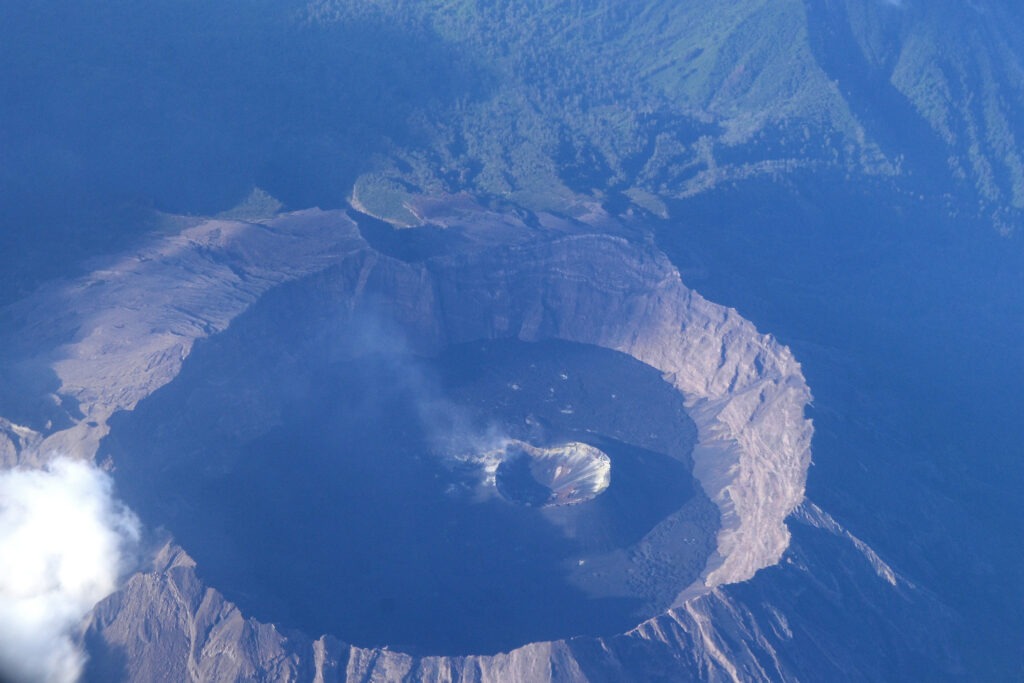
As impressive as volcanoes may seem from a safe distance, they can unfortunately often be dangerous for people living nearby. And Gunung Agung is also one of the active volcanoes, so potentially dangerous eruptions can never really be ruled out.
In the not so distant past, Gunung Agung has erupted several times, spewing out a lot of lava, rock and ash, so that whole villages had to be evacuated, and exclusion zones had to be set up around the mountain. Sometimes there were also noticeable restrictions on air traffic, as the ash clouds emitted by the volcano were simply far too large and dense.
A few years ago, towards the end of November 2017, numerous volcanologists had warned of a very strong eruption, which fortunately did not happen. However, extremely large ash clouds had nevertheless ensured that during this time all flights to and from Bali had to be canceled.
Then, the following year(2018), there were multiple outbreaks at different times of the year, forcing air travel to be restricted again that year (and this time, multiple times). Several outbreaks then occurred again in 2019, prompting another round of flight cancellations on May 24, 2019.
So, before traveling to Bali, it is definitely advisable to inquire about the current volcanic activities of Gunung Agung. There are various websites for this, including the website of the German Foreign Office.
The climb
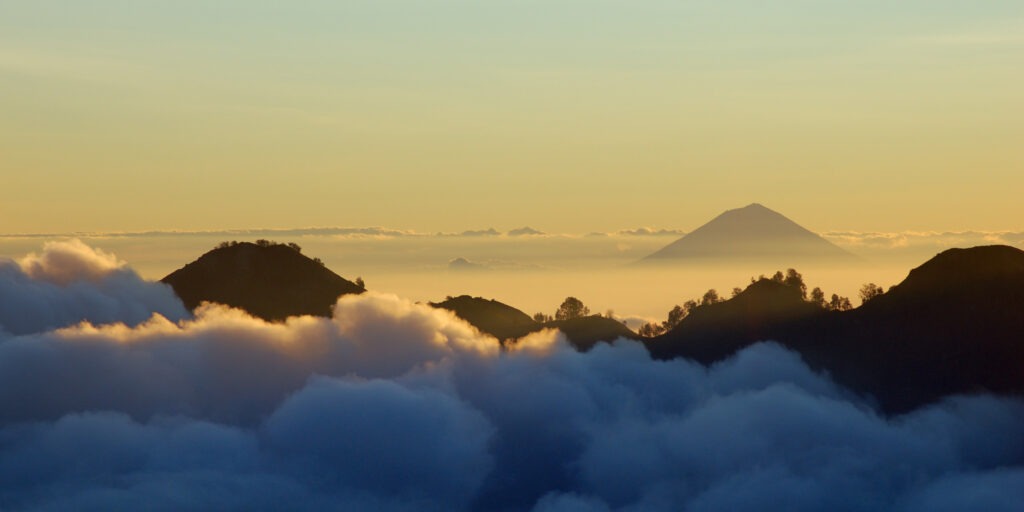
Especially for the inexperienced, the ascent of the mountain often turns out to be relatively difficult. Especially at the beginning of the ascent, many beginners do not cope with the high humidity of the jungle, or have difficulty with the sometimes uneven paths. Since the ascent is also quite steep, this can be quite energy-sapping for many. As a tourist, you should always take at least one local guide with you when you climb, as they will know exactly which sacred sites are off limits, for example.
In addition, the guides know their way around the mountain even in the dark, so it’s hard to lose your bearings at night on Gunung Agung. From the multitude of possible paths that lead up the mountain, two paths have emerged over time that are particularly popular for the ascent.
The Southwest Route
This trail starts from the Hindu temple Pura Besakih and takes about six to eight hours. The goal is the highest mountain peak. The last hour of the climb is considered particularly demanding on this route. Most of the time it is decided to start the tour on this route around 11 p.m., so that at the end a beautiful sunrise can be enjoyed in time on the mountain top.
The southern route
Not far from the village“Selat” (at the temple “Pura Pasar Agung”) begins the southern route, which is considered the faster and easier of the two routes. The trail should only take a total of four hours, but it ends about 100 meters below the summit. The path starts in a forest section, and then leads over stony paths, as well as over petrified lava up the mountain. Climbing passages are also part of the southern route.
The descent
Regardless of which of the two paths you choose – the descent will be quite strenuous either way, as your own body weight must always be well supported with targeted steps. As soon as the jungle section begins, the path also tends to become relatively slippery. In any case, it is advisable to be as careful on the descent as on the ascent.
Other attractions in the vicinity
Gunung Agung is undoubtedly one of the sights that make a trip to the Indonesian island of Bali worthwhile. However, this does not mean at all that during a stay in this area you have to limit yourself only to the volcano. In fact, there are many other attractions nearby that can be reached quite easily from the vicinity of the volcano.
For example, if you plan a tour to the mountain, you can also combine this tour with a visit to the water palace“Tirta Gangga“, or make a side trip to the Bali Aga village“Tenganan“. A visit to the temple “Pura Besakih”, which is located directly on the slope, can also be wonderfully accommodated in a day trip to the volcano – however, you should allow at least two hours for the visit to the temple.


